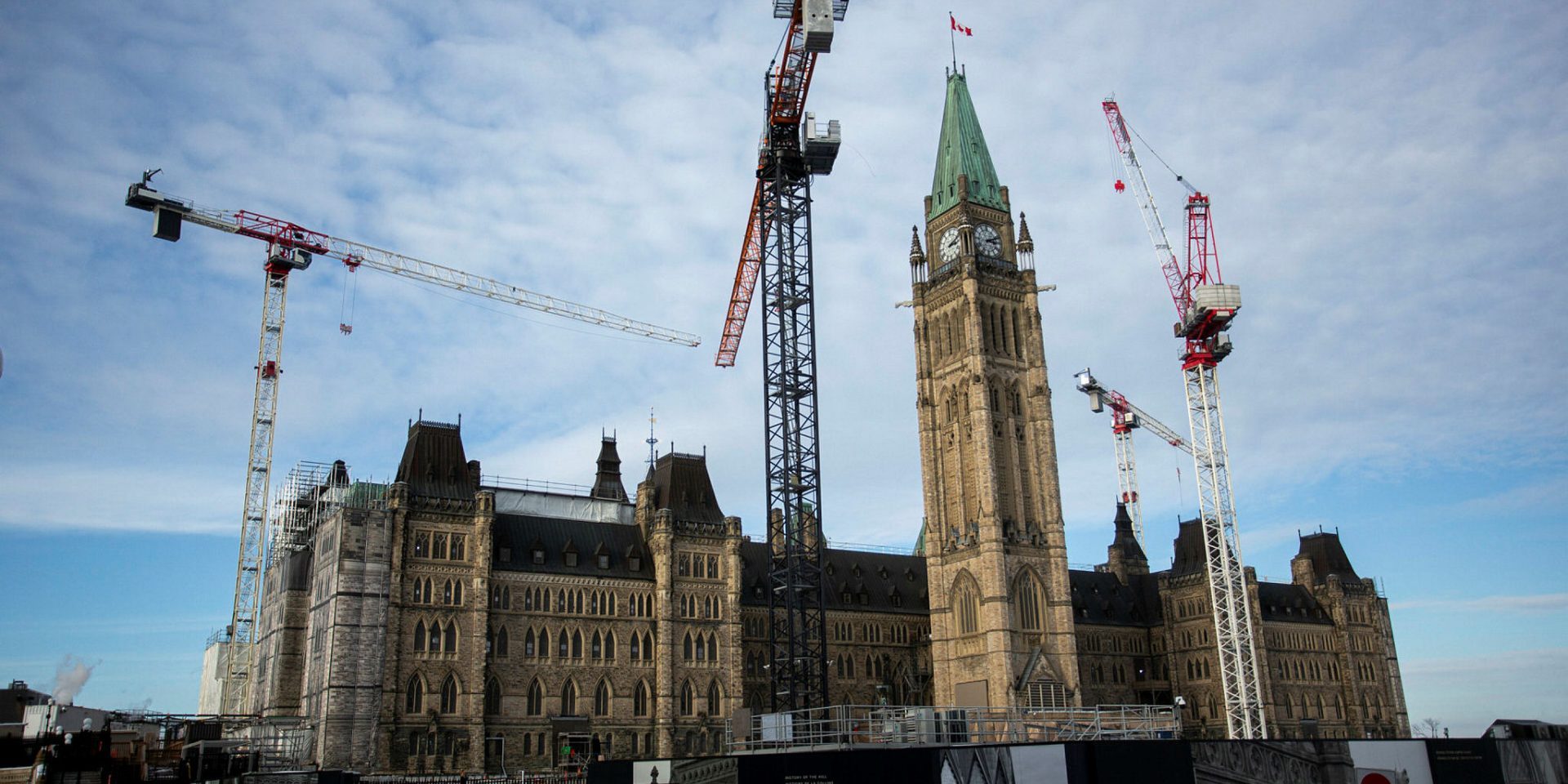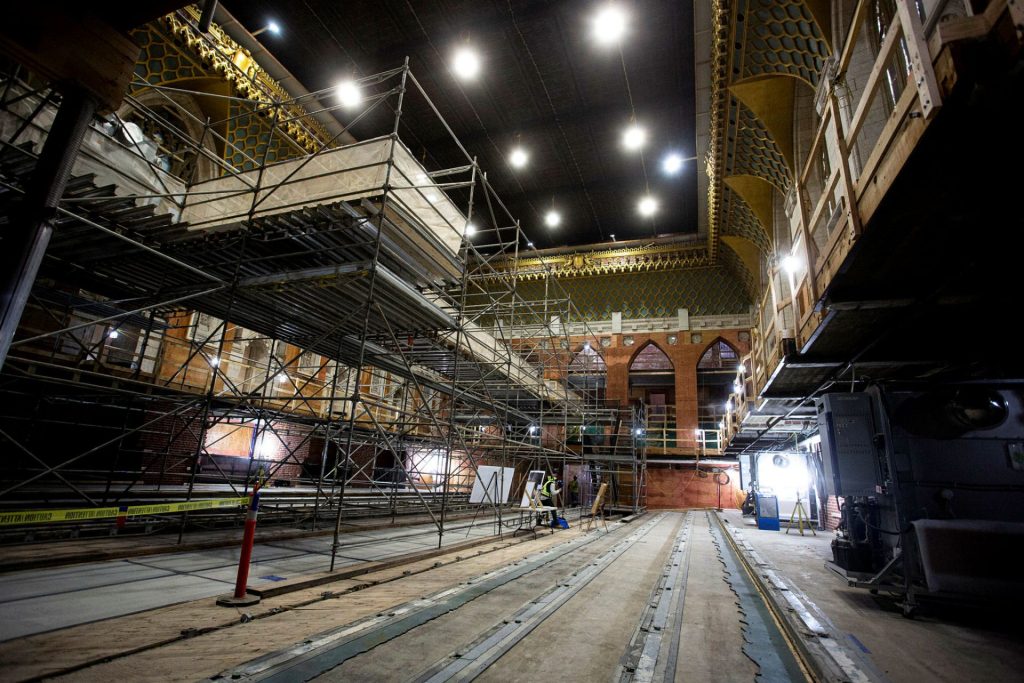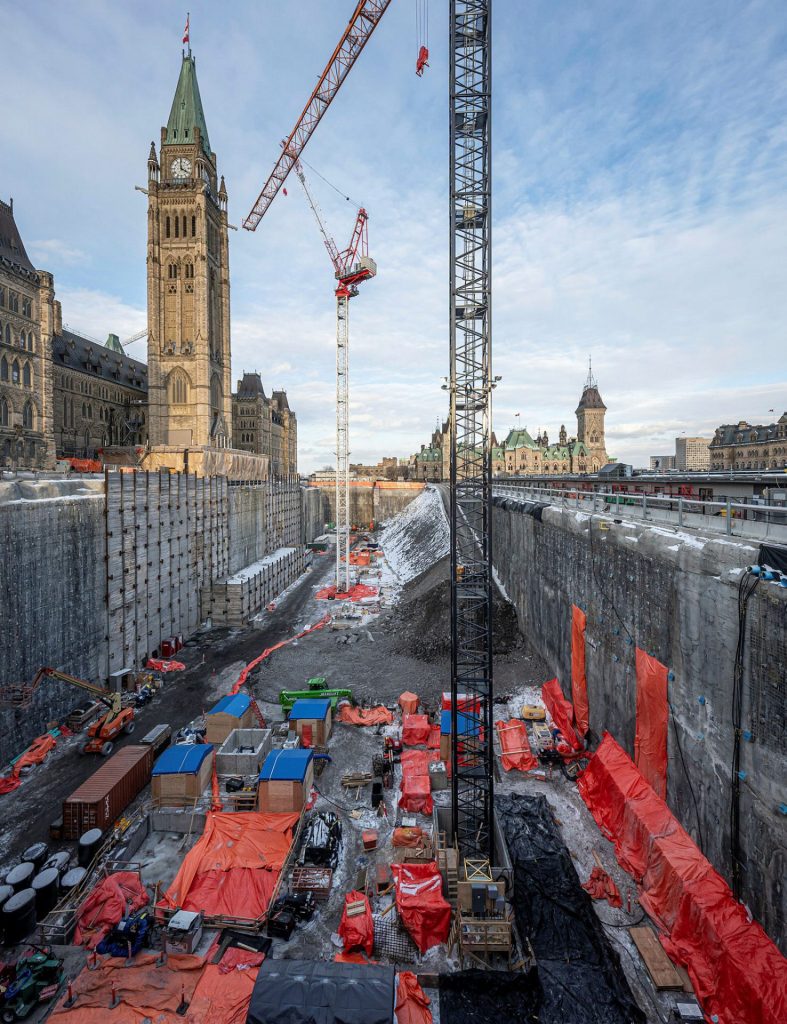MP, Senate groups to convene during prorogation to talk Hill reno plans

Deadlines are coming up to finalize plans for the Centre Block project, and the MP and Senate groups tasked with overseeing Hill renovations are both set to flex their powers to convene during prorogation in order to weigh in and avoid delays.
“We do not want to be the cause of delays. It’s a long enough project as it is,” said CSG Senator Scott Tannas (Alberta), chair of the Senate Internal Economy Committee’s Long-term Vision and Plan (LTVP) subcommittee.
Like their parent committees, the Senate subcommittee and corresponding MP working group, which is a subcommittee of the House Board of Internal Economy (BOIE), continue to exist—with their memberships intact—during adjournment, dissolution, and prorogation. As such, unlike almost every other Senate and House committee, they continue to be able to meet.
The Hill Times confirmed that neither the Senate Internal Economy Committee (CIBA) nor the BOIE themselves currently plan to meet during prorogation, but both sub-groups overseeing Hill renovations do.
Tannas said his subcommittee has scheduled a double hybrid meeting—lasting four hours, instead of two—on Feb. 26, with another on the books for April.
The group agreed to a schedule for outstanding decisions that require parliamentarian approval and input with the department last fall, and “built a plan around it that runs all the way through till May,” he said.
“I think [PSPC] may have wondered if we were going to stick to the schedule, and we’ve told them that we’re going to continue to meet.”

In a March 2023 report, the auditor general flagged the need for timely decision-making by parliamentarians, noting such delays were “an ongoing concern for the department for the delivery of the program.”
Public Services and Procurement Canada’s (PSPC) stated schedule would see it finalize conceptual design plans for Centre Block and the Parliament Welcome Centre this fall, with landscape design development to be completed by this winter.
“We’re determined to keep on track. The auditor general highlighted this issue of the two Houses of Parliament, and the fact that PSPC has been very respectful of that—we don’t want to make that any more time consuming than it needs to be, and so there just wasn’t any question for us that we would keep going using the intersessional authority that we have,” said Tannas.
Conservative MP Chris D’Entremont (West Nova, N.S.), chair of the MP working group, confirmed “a couple of dates” have been floated, with plans to hold “at least one meeting, if not two, before we are supposedly supposed to return back on the 24th [of March].”
“We’re just trying to see if we can get a few things complete before such time that we probably will change. I mean, let’s not forget that we’re staring down going back into the House, but we’re also staring down a possible election that will cause more delay as it goes along. So if we get a few things done ahead of time then it’ll give the project and PSPC actually some time to move along and not worry too much about decisions of MPs until we get back,” he said.
D’Entremont said the “most pressing” outstanding decision for MPs currently relates to the seating plan—and corresponding furniture—for the House Chamber, which needs to be reworked in order to accommodate future Parliaments. The House currently has 338 members, but will have grown to 343 after the next general election, with another redistribution effort that is likely to add more seats set to begin just as Centre Block is re-occupied in 2031-32.

When the House jumped from 308 to 338 MPs after the 2015 election, extra seats were squeezed in by installing fold-down seating, and turning the traditional two-seat groupings into five-seat groupings, in the Chamber’s back rows.
Other outstanding design-related decisions include plans for the roughly 50 high-heritage spaces—or “Pearson Special Rooms”—in Centre Block. In terms of landscaping, leftover matters include the placement of statues around the Hill.
D’Entremont noted party caucuses were briefed on seating options before the winter break. “We’re doing our work. Some of it is not as straightforward, unfortunately, when you’re trying to deal with a bunch of different caucuses and a bunch of different people with different ideas, so we just need to get the consensus on some of those things.”
Once the working group reaches a single recommendation on House seating, it still needs to go to the BOIE for approval. While the board itself currently has no plans to meet during prorogation, D’Entremont noted the working group’s recommendations are generally adopted, and said the aim is to “give enough direction to PSPC that they can prepare for any eventuality.”
“Most of our directions have been accepted, so as long as we’re careful in the decisions we’re making and understanding the importance of getting it to BOIE for final approval, PSPC is good at sort of managing the expectation as time rolls on,” he said.
Asked about the potential impact of prorogation on project progress, Guillaume Bertrand, communications director to Public Services and Procurement Minister Jean-Yves Duclos (Québec, Que.), said, “We have confidence in the process, and we expect no delay due to the prorogation.”
In response to emailed questions, the department said, “PSPC continues to work closely with the Senate and House of Commons Administrations to advance decision-making for the Centre Block Rehabilitation project.”
Project spending passes billion-dollar mark
PSPC’s latest quarterly progress report covering the last three months of 2024 was released in early January, and indicates almost $1.1-billion has now been spent of the project’s overall $4.5- to $5-billion budget—up $103-million from the previous quarter.
Work on the Centre Block project is currently largely focused on three main areas: slab replacement and pile drilling work on the building’s lowest level to install a support network and ready it for upcoming excavations underneath the building; roof replacement, and masonry work on the west and east walls; and the start of Parliament Welcome Centre construction.
Also ongoing on Centre Block’s upper levels is installation of “temporary bracing to support the structural rebuild” to come in the building—a list that includes the installation of new stairwells and elevator banks.
The Hill Times has previously detailed the extensive preparatory work being done to ready the 100-year-old building for excavations underneath that are required both to install a base-isolation seismic upgrade, and to connect Centre Block to the new underground Parliament Welcome Centre. That list includes installation of a network of steel piles, structural steel supports, and concrete beams, as well as replacement of the building’s level 1 slab.
During a media tour of the site last November, about 85 per cent of the estimated 800 steel piles—or posts—that will be drilled into the basement level of Centre Block were said to have been installed. As of Dec. 31, that work was 89 per cent complete, according to PSPC’s latest progress report. Among the key milestones marked as achieved last fall is the installation of the temporary concrete shear walls that will help support Centre Block during excavations.
Excavation will involve the careful removal of an estimated 100,000 cubic metres of bedrock, and is set to begin this spring, starting in Centre Block’s west courtyard.
As has been previously reported, Centre Block’s roof will be replaced, and the new sloped copper roof will extend roughly five metres—or about one floor level—higher in order to accommodate new mechanical systems to support the building’s upper levels. Meanwhile, Centre Block’s lower floors will be serviced by systems in the basement, which is where all mechanical systems previously existed. According to the department, the height difference will be “almost imperceptible” from street level.
To protect the building—and workers in turn—from the elements during roof replacement, the steel bones of a temporary enclosure have now been installed, alongside scaffolding.
“This will protect the building and facilitate construction access during the rebuild. Bracing will be installed to support the structure as the old roof is removed and rebuilt. These preparations are underway, making way to start the roof rebuild in the west” this winter, explained PSPC in an email.

If you’ve spotted it from the street, rest assured that this new enclosure sits higher than the new roof will once complete.
Construction of the new Parliament Welcome Centre, which will serve as the public’s main entrance to the Hill and as a hub for parliamentarians, is underway.
Two of three tower cranes set to be installed along the bottom of the roughly 23-metre-deep pit to lift materials in and out have now gone up—as of mid-November, and mid-January, respectively—with the third to be installed this spring. The “footings for walls and columns” for the new three-storey underground structure are “currently being poured on the western side” of the pit, said PSPC. “The cold weather has not caused delays, as tarping and localized heating is utilized to ensure that consistent concrete pouring conditions are maintained.”
Also marked as complete in the latest progress report is restoration of the 22 carillon bells that were shipped off to the Netherlands in 2022. Other components of the carillon that were similarly sent to the Netherlands, including the “keyboard and associated mechanical parts,” are still undergoing work.
Those parts, along with the bells, are expected to return to Canada next year. But it will be a while yet before the Peace Tower carillon rings again. Thirty-one of its 53 bells were left in place and need to wait until renovation work on the tower itself is complete before they can be cleaned on site, “likely closer to the 2031 timeframe,” according to the department.
Among the “key milestones” on the agenda for the coming months is completion of landscape design development and installation of the steel support posts, completing 50 per cent of slab replacement work, and beginning the roof rebuild.
Editor’s Note: This story was updated on Feb. 13 to reflect the fact that the Senate’s Audit and Oversight Committee, as well as the Ethics and Conflict of Interest for Senators Committee are both also able to meet during prorogation.
The Hill Times






 LICENSING
LICENSING PODCAST
PODCAST ALERTS
ALERTS













